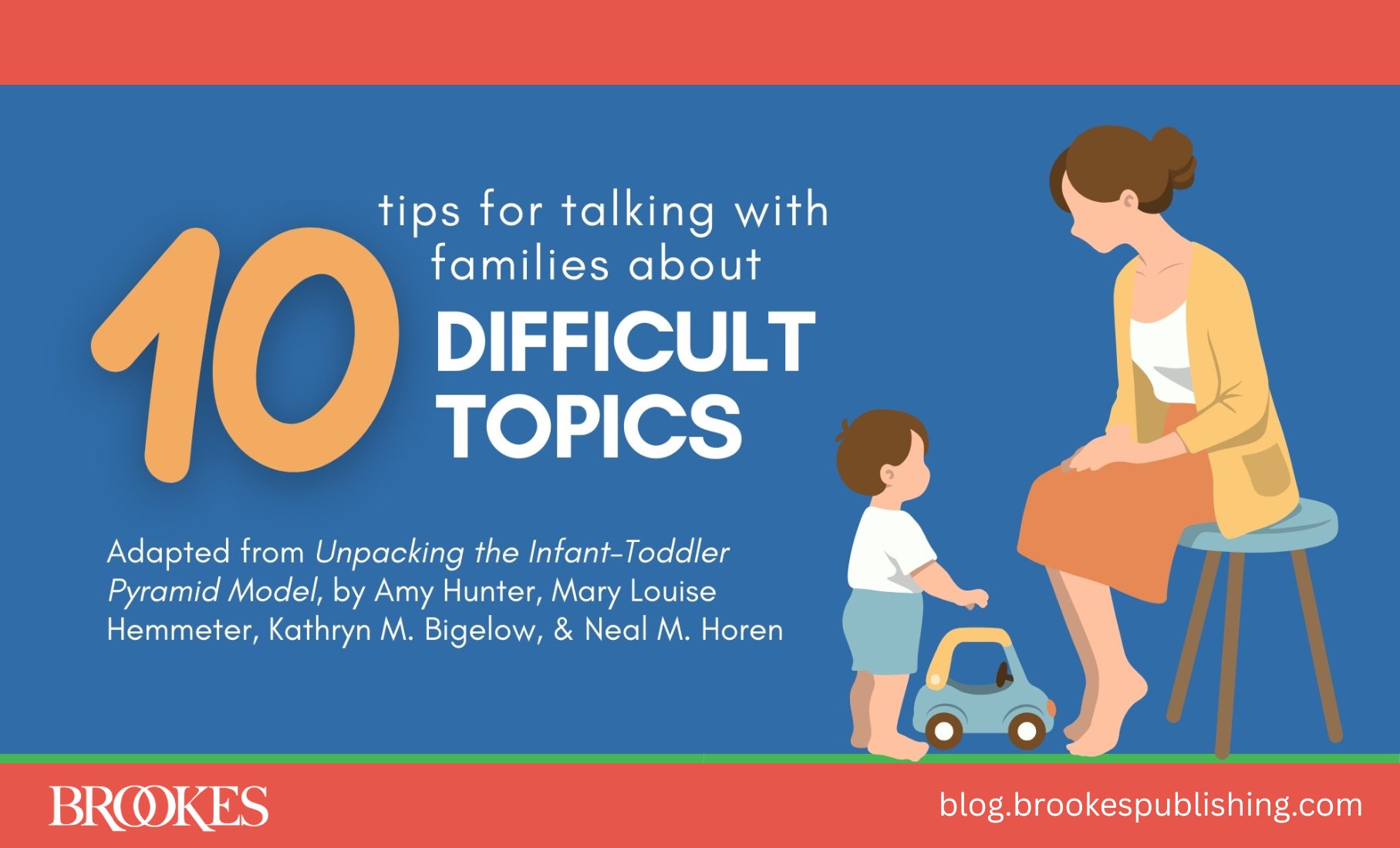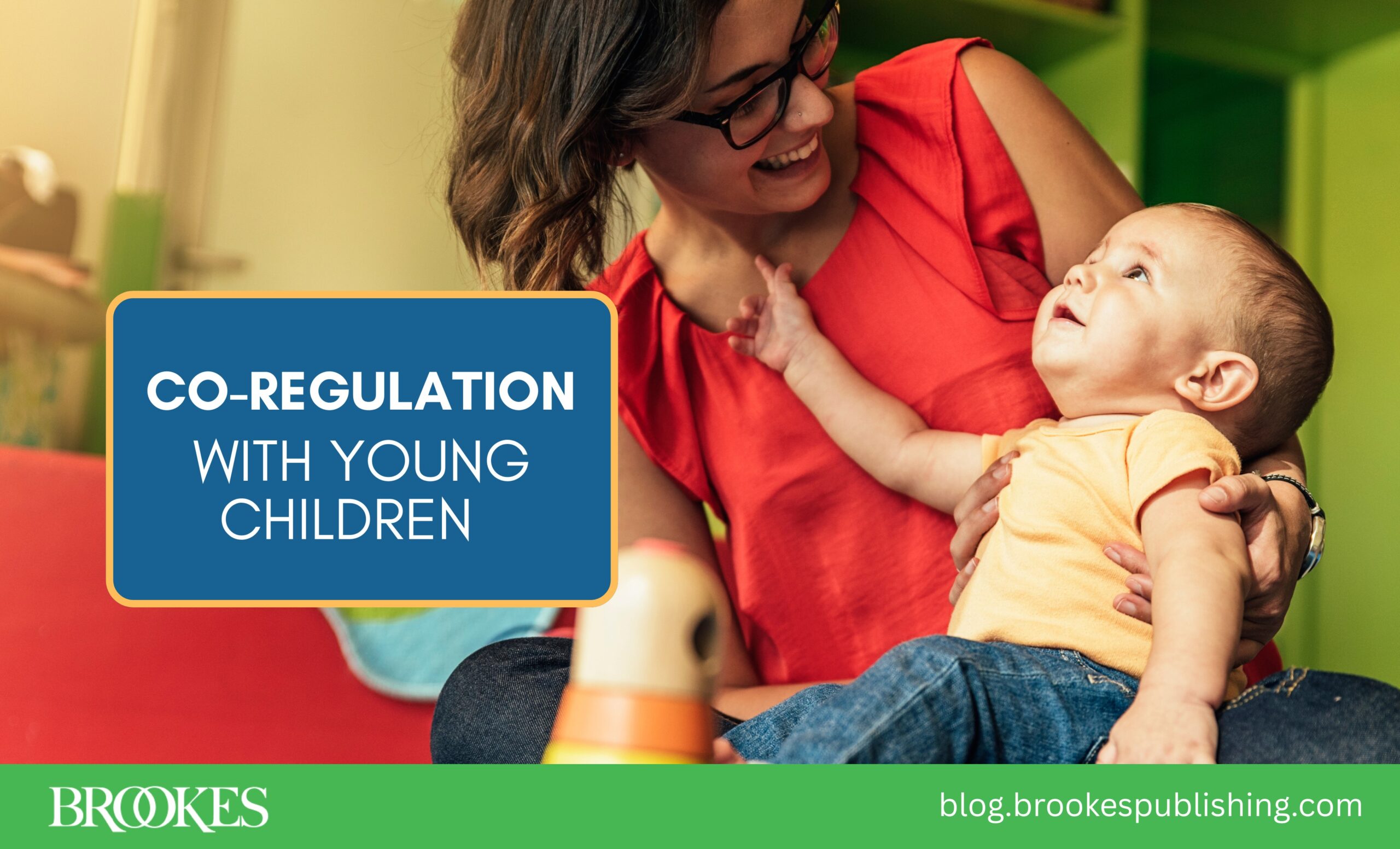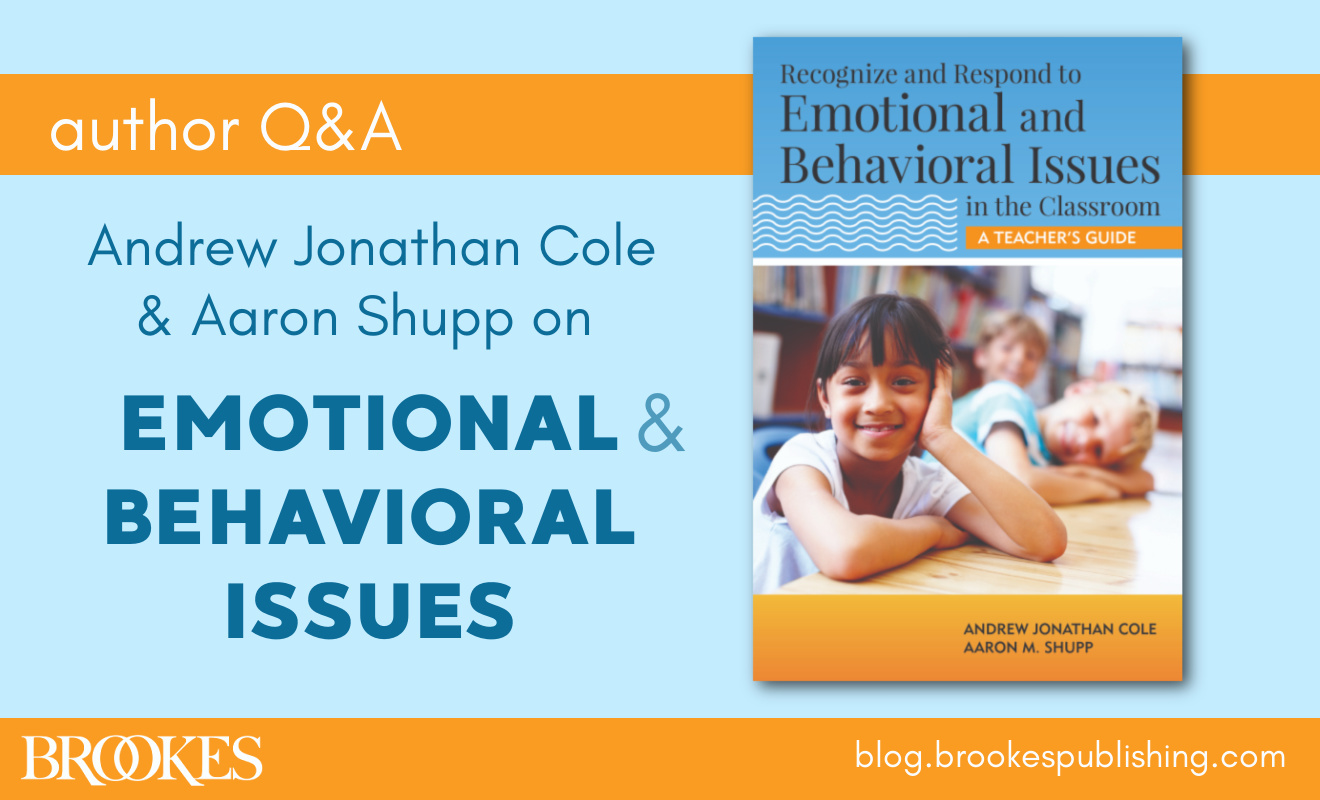Find out in this Q&A with the authors of Recognize and Respond to Emotional and Behavioral Issues in the Classroom: A Teacher’s Guide
Download a FREE excerpt on steps to take when a student demonstrates problems with authority figures.
Your new book offers guidance to teachers who may see signs of emotional or behavioral distress in students in their classroom. What are some of the types of issues a teacher might see?
Teachers today see a diverse spectrum of student difficulties that can interfere with learning in the classroom. Of course, not every student in a classroom will present an emotional or behavioral issue, and when there are such difficulties, the level of severity can range from having a mild impact on the student's educational experience to having a severe impact.
Some of the student challenges teachers may encounter include problems related to poor concentration and impulsive behavior, communication patterns, low moods, peer relations, disregard for authority, aggression, and bullying.
Teachers have so much else to do—why is it important to be on the alert for these issues?
Attending to these challenges can actually increase productivity in the classroom. In our experience, teachers are extremely dedicated to fostering each child's academic growth. However, their ability to do so can be compromised when faced with the need to manage emotional or behavioral issues. The need to address such difficulties is constant, but the effectiveness of approaches can vary greatly. The better these issues are managed, the more time and energy educators have to devote to their primary focus—the education of each child in the classroom.
Teachers are not mental health specialists—do they have to be to follow the guidance in your book?
No. In fact, we wrote this book with the understanding that teachers have a great deal of knowledge and expertise related to working with students, but should not be thrust into the role of diagnosing or providing treatment for mental health issues (they are already asked to take on many different roles!).
The recommendations in this book are based on observable student behavior and are collaborative in nature. The focus on observable behavior allows teachers to note what they are seeing and quickly access the recommendations that are associated with the particular issue. The collaborative nature of the recommendations refers to the expectation that teachers will look at the recommendations and integrate them with what they know about the student, their classroom, and other contextual factors to create effective classroom interventions. Educators are also provided with suggestions regarding when to consult with or make referrals to other school professionals (administrators, counselors, social workers, psychologists, etc.).
Under the topic of "establishing a positive relationship," you recommend that teachers find at least one quality they really like about each student. Why is this most important when it seems most difficult?
Educators, along with mental health and other human service professionals, are themselves human and will invariably have human reactions to their work with students. We know from our own experience working with challenging student behaviors and from the reports of many teachers over the years that we all can feel frustrated at times. In any profession in which the quality of the outcome is linked to the quality of the relationship, as it is in teaching, these reactions must be recognized and addressed.
In order to maintain an optimistic and supportive stance, it is important to sometimes reflect on what you personally admire about each student. When this is most difficult, we are in danger of becoming overly frustrated or hopeless about having a positive impact.
Really finding something, even something small, that you like and admire about a student is often enough to increase that natural inclination toward optimism and hope that leads someone into the teaching profession in the first place. Without this belief that the student can change, even the best interventions are less likely to be effective.
Working with families can be challenging ... what are some recommendations you have for teachers approaching a potentially difficult conversation?
First, outline your purpose for the conversation and stay focused on this if the direction starts to shift. Try to limit what you want to address to only the most pressing concern, or, at most, two or three related points. Share direct observations that illustrate both strengths of the student, and the concerns you would like to address.
We've found that starting with the assumption that every family member or guardian wants the best for the student, and emphasizing that you share this goal and believe in the student's potential is a very effective way of building rapport and establishing a working relationship.
You describe a phenomenon in which a child's behavior may in fact become magnified when you apply some of the interventions in the book. Can you elaborate?
Every behavior serves a purpose. Even behaviors that might be seen as problematic developed because they created a desired outcome for the student in some situations. When we are used to something working, there is a natural frustration when it no longer works.
Before we try something different, we often try what previously worked, only with more determination and effort. This is often the most difficult time to sustain a new intervention, and we might find ourselves questioning what we are doing or facing questions from others. However, it is the consistency of maintaining our approach through this challenging time that often leads to positive, lasting changes.
Why did you think it was important to write this book?
In our roles as psychologists, we have worked in schools, evaluated students, provided consultations with school professionals, and offered trainings related to the emotional and behavioral issues students present in classrooms. Our experience has taught us that education professionals are on the front-lines of recognizing and managing children's difficulties.
Information on how to deal with specific types of classroom behaviors must be readily accessible, as teachers have very little time to seek out, or search through lengthy resources. We thought of our experience working with children, the dedication we had seen from teachers, and the monumental (and seemingly increasing) challenges teachers often face. We hoped that if we could offer ideas based on what we know to be effective, and present these ideas in a way that can be adapted and molded based on the needs and expertise of the user, we may be able to create a resource that is useful and supportive to professional educators.
Stay up to date on the latest posts, news, strategies, and more!
Sign up for one of our FREE newslettersTopics
More posts like this

10 Tips for Talking With Families About Difficult Topics
September 29, 2025
9 Expert Insights about Student Behavior
August 12, 2025


Write a Comment
Your email address will not be published. Required fields are marked *
Post a Comment